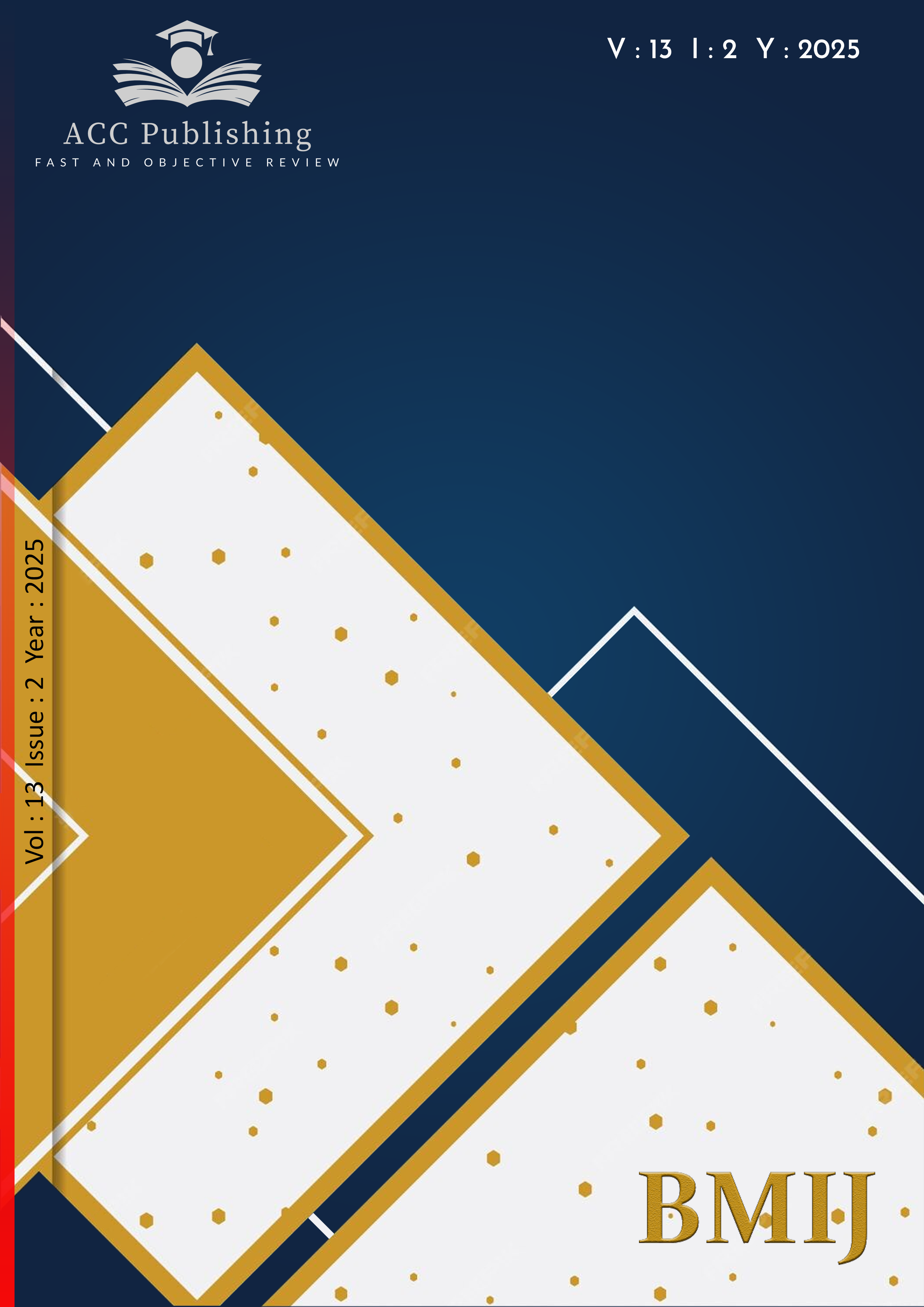Examining the life satisfaction, job satisfaction, intention to leave and burnout levels of employees according to the compliance of workplaces with the well building standard- mind concept

Published 2025-06-25
Keywords
- Burnout, Intention to Leave, Job Satisfaction, Life Satisfaction, WELL Building Standard
- İşten Ayrılma Niyeti, İş Tatmini, Yaşam Doyumu, Tükenmişlik, Well Bina Standardı
How to Cite
Copyright (c) 2025 Çağla Özçelik- Bahar Çelik

This work is licensed under a Creative Commons Attribution-NonCommercial-NoDerivatives 4.0 International License.
How to Cite
Abstract
Workplaces need high-performance employees to boost productivity, and a comfortable environment is essential for attracting the right talent. While work contributes to mental well-being, a hostile work environment may result in both physical and mental health issues. Since two-thirds of individuals with mental health problems are employed, workplaces offer a valuable opportunity to protect and improve mental health. The WELL Standard is a building certification system that focuses on enhancing health and well-being in the built environment. This study hypothesises that buildings with higher WELL-Mind scores are associated with greater job and life satisfaction, as well as lower intention to leave and lower levels of burnout. In this context, the study examined the life satisfaction, job satisfaction, intention to go, and burnout levels of users in the Faculty of Health Sciences (FHS) and the Faculty of Medicine (FM) at Kütahya Health Sciences University, based on the WELL Standard Mind concept. Initially, training was provided by an accredited WELL AP expert for the WELL Building Standard. Following this, the buildings of the Faculty of Health Sciences and the Faculty of Medicine were evaluated based on the WELL-Mind concept, and data were subsequently collected from staff via surveys. The data collected through online surveys was analysed using SPSS 26, and the WELL-Mind statuses of both buildings were compared. Although the FM building met all prerequisites and had a higher WELL-Mind score, intention to leave and burnout levels were higher, while life and job satisfaction were lower compared to FHS. Managers can use WELL Standard policies and designs as a guide to enhance employees' mental health.
References
- Alanyalı, L. K. (2006). Örgütsel stres kaynaklarının iş tatminine olan etkilerinin tükenmişlik ve dinçlik (coşku) etkileri bağlamında incelenmesi (uygulamalı bir araştırma) (Doctoral dissertation, Bursa Uludag University (Turkey)).
- Alkan, D. (2022). Yeşil bina sertifika sistemlerinin uygulanabilirliğine dair bir karşılaştırma: LEED, BREEAM ve WEEL örneği (Master's thesis, Başkent Üniversitesi Fen Bilimler Enstitüsü).
- Amer, S. A., Elotla, S. F., Ameen, A. E., Shah, J., & Fouad, A. M. (2022). Occupational burnout and productivity loss: a cross-sectional study among academic university staff. Frontiers in public health, 10, 861674.
- Applebaum, D., Fowler, S., Fiedler, N., Osinubi, O., & Robson, M. (2010). The impact of environmental factors on nursing stress, job satisfaction, and turnover intention. JONA: The Journal of Nursing Administration, 40(7/8), 323-328.
- Banbury, S., & Berry, D. C. (1997). Habituation and dishabituation to speech and office noise. Journal of Experimental Psychology: Applied, 3(3), 181.
- Bluedorn, A. C. (1982). A unified model of turnover from organisations. Human relations, 35(2), 135-153.
- Bozdoğan, S. C. (2020). Aşırı iş yükünün, tükenmişlik, iş stresi ve işten ayrılma niyeti üzerindeki etkisi.
- BREEAM (2017, Temmuz 3). BREEAM international new construction 2016. https://files.bregroup.com/BREEAM/technicalmanuals/BREEAMInt2016SchemeDocument/Default.html
- Burisch, M. (2002). A longitudinal study of burnout: The relative importance of dispositions and experiences. Work & Stress, 16(1), 1-17.
- Candido, C., Marzban, S., Haddad, S., Mackey, M., & Loder, A. (2020). Designing healthy workspaces: results from Australian certified open-plan offices. Facilities, 39(5/6), 411-433.
- Cho, Y. J., & Lewis, G. B. (2012). Turnover intention and turnover behavior: Implications for retaining federal employees. Review of public personnel administration, 32(1), 4-23.
- Dağlı, A., & Baysal, N. (2016). Yaşam doyumu ölçeğinin türkçe’ye uyarlanmasi: geçerlik ve güvenirlik çalişmasi. Elektronik Sosyal Bilimler Dergisi, 15(59).
- Diener, E. D., Emmons, R. A., Larsen, R. J., & Griffin, S. (1985). The satisfaction with life scale. Journal of personality assessment, 49(1), 71-75.
- Erdoğan, B., Bauer, T. N., Truxillo, D. M., & Mansfield, L. R. (2012). Whistle while you work: A review of the life satisfaction literature. Journal of management, 38(4), 1038-1083.
- Freudenberger, H. J. (1974). Staff burnout. Journal of social issues, 30(1), 159-165.
- García-Mainar, I., Montuenga, V. M., & Navarro-Paniagua, M. (2015). Workplace environmental conditions and life satisfaction in Spain. Ecological Economics, 119, 136-146.
- Gil-Ozoudeh, I., Iwuanyanwu, O., Okwandu, A. C., & Ike, C. S. (2024). The impact of green building certifications on market value and occupant satisfaction. International Journal of Management & Entrepreneurship Research, 6(8), 2782-2796.
- Grinde, B., & Patil, G. G. (2009). Biophilia: does visual contact with nature impact on health and well-being?. International journal of environmental research and public health, 6(9), 2332-2343.
- Gupta, N., Wåhlin-Jacobsen, C. D., Abildgaard, J. S., Henriksen, L. N., Nielsen, K., & Holtermann, A. (2018). Effectiveness of a participatory physical and psychosocial intervention to balance the demands and resources of industrial workers: A cluster-randomised controlled trial. Scandinavian Journal of Work, Environment & Health, 58-68.
- Hassard, J., Teoh, K. R., Visockaite, G., Dewe, P., & Cox, T. (2018). The cost of work-related stress to society: A systematic review. Journal of occupational health psychology, 23(1), 1.
- Hoppock, R. (1935). Job Satisfaction, Harper and Brothers. New York, 47.
- Ildiri, N., Bazille, H., Lou, Y., Hinkelman, K., Gray, W. A., & Zuo, W. (2022). Impact of WELL certification on occupant satisfaction and perceived health, well-being, and productivity: A multi-office pre-versus post-occupancy evaluation. Building and Environment, 224, 109539.
- IWBI, (2022, Q4). WELL v2.https://v2.WELLcertified.com/en/WELLv2-22q4/concepts
- IWBI, (2016). WELL. https://standard.WELLcertified.com/sites/default/files/The%20WELL%20Building%20Standard%20v1%20with%20May%202016%20addenda.pdf
- Jahncke, H., Hygge, S., Halin, N., Green, A. M., & Dimberg, K. (2011). Open-plan office noise: Cognitive performance and restoration. Journal of Environmental Psychology, 31(4), 373-382.
- Jarman, L., Martin, A., Venn, A., Otahal, P., Blizzard, L., Teale, B., & Sanderson, K. (2016). Workplace health promotion and mental health: three-year findings from partnering Healthy@ Work. PLoS One, 11(8), e0156791.
- Jones, M. D. (2006). Which is a better predictor of job performance: Job satisfaction or life satisfaction?. Journal of Behavioral and Applied Management, 8(1), 20-42.
- Kaheh, D., & Heivadi, T. (2012). Job satisfaction & mental health. Payesh (Health Monitor), 11(3), 391-397.
- Kalliath, T., & Morris, R. (2002). Job satisfaction among nurses: a predictor of burnout levels. JONA: The Journal of Nursing Administration, 32(12), 648-654.
- Kantola, D. (2020). Socially Sustainable Office Buildings-A better business for everyone.
- Karagöz, Y. (2021). Bilimsel araştırma yöntemleri. Nobel Akademik Yayıncılık: Ankara.
- Knapp, M., McDaid, D., & Parsonage, M. (2011). Mental health promotion and mental illness prevention: The economic case.
- Korkmaz, Ö., Çakır, R., & Özden, M. Y. (2015). Bilgisayarca düşünme beceri düzeyleri ölçeğinin (BDBD) ortaokul düzeyine uyarlanması. Gazi Eğitim Bilimleri Dergisi, 1(2), 143-162.
- Kumar, V., & Kumar, S. (2014). Workplace spirituality as a moderator in relation between stress and health: An exploratory empirical assessment. International Review of Psychiatry, 26(3), 344-351.
- Küller, R., Ballal, S., Laike, T., Mikellides, B., & Tonello, G. (2006). The impact of light and colour on psychological mood: a cross-cultural study of indoor work environments. Ergonomics, 49(14), 1496-1507.
- LaMontagne, A. D., Martin, A., Page, K. M., Reavley, N. J., Noblet, A. J., Milner, A. J., ... & Smith, P. M. (2014). Workplace mental health: developing an integrated intervention approach. BMC psychiatry, 14, 1-11.
- Largo-Wight, E., Chen, W. W., Dodd, V., & Weiler, R. (2011). Healthy workplaces: The effects of nature contact at work on employee stress and health. Public health reports, 126(1_suppl), 124-130.
- Lee, B. K., Seo, D. K., Lee, J. T., Lee, A. R., Jeon, H. N., & Han, D. U. (2016). Impact of work environment and work-related stress on turnover intention in physical therapists. Journal of physical therapy science, 28(8), 2358-2361.
- Licina, D., & Yildirim, S. (2021). Occupant satisfaction with indoor environmental quality, sick building syndrome (SBS) symptoms and self-reported productivity before and after relocation into WELL-certified office buildings. Building and Environment, 204, 108183.
- Netemeyer, R. G., Boles, J. S., McKee, D. O., & McMurrian, R. (1997). An investigation into the antecedents of organisational citizenship behaviors in a personal selling context. Journal of marketing, 61(3), 85-98.
- Ölmez, C. (2019). Yeşil Yapı Sertifika Sistemlerinin Kullanıcı Gereksinimlerine İlişkin Tasarım Kararları Bağlamında İrdelenmesi BREEAM, LEED Ve WELL Bina Standardı (Yüksek Lisans Tezi, Yıldız Teknik Üniversitesi Fen Bilimleri Enstitüsü
- Rode, J. C., Rehg, M. T., Near, J. P., & Underhill, J. R. (2007). The effect of work/family conflict on intention to quit: The mediating roles of job and life satisfaction. Applied Research in Quality of Life, 2, 65-82.
- Seçer, İ. (2013). SPSS ve LISREL ile pratik veri analizi: Analiz ve raporlaştırma.
- Schermelleh-Engel, K., Moosbrugger, H., & Müller, H. (2003). Evaluating the fit of structural equation models: Tests of significance and descriptive goodness-of-fit measures. Methods of psychological research online, 8(2), 23-74.
- Shirom, A. (1989) Burnout in work organisations. In: Cooper, C.L. and Robertson, I., Eds., International Review of Industrial and Organizational Psychology, Wiley, New York, 25-48.
- Shirom, A. (2005, April). The Shirom-melamed burnout measure (SMBM)–Version 2.
- Sisley, R., Henning, M. A., Hawken, S. J., & Moir, F. (2010). A conceptual model of workplace stress: The issue of accumulation and recovery and the health professional. New Zealand Journal of Employment Relations, 35(2), 3-15.
- SİVUK, D., & SEYHAN, F. (2021). ÖRGÜTSEL ÇATIŞMA, ÖRGÜTSEL STRES, İŞ YAŞAM KALİTESİ, İŞ TATMİNİ ve İŞTEN AYRILMA NİYETİ ARASINDAKİ İLİŞKİ: SAĞLIK ÇALIŞANLARININ VERİMLİLİĞİ ÜZERİNE BİR ARAŞTIRMA. Verimlilik Dergisi, (4).
- Tabachnick, B. G., Fidell, L. S., & Ullman, J. B. (2013). Using multivariate statistics (Vol. 6, pp. 497-516). Boston, MA: pearson.
- Telli, E., sinan ÜNSAR, A., & Oğuzhan, A. (2012). Liderlik davranış tarzlarının çalışanların örgütsel tükenmişlik ve işten ayrılma eğilimleri üzerine etkisi: Konuyla ilgili bir uygulama. Ejovoc (Electronic Journal of Vocational Colleges), 2(2), 135-150.
- Temel, V. (2022). Sporda Kendi Kendine Konuşma Ölçeği'nin Türkçe Uyarlaması: Geçerlik ve Güvenirlik Çalışması. The Journal of International Anatolia Sport Science, 7(1), 11-24.
- USGBC, (2019). LEED v4.1 building design and construction. USGBC.https://www.usgbc.org/sites/default/files/2021-03/LEED%20v4.1%20BD%2BC%20Guide%2004092019.pdf
- Weiss, D., Dawis, R. V., England, G. W., & Lofquist, L. H. (1967). Minnesota Satisfaction Questionnaire--Long Form. Journal of Applied Psychology.
- WHO, (2017). Mental health at work. https://www.who.int/news-room/fact-sheets/detail/mental-health-at-work
- Vigo, D., Thornicroft, G., & Atun, R. (2016). Estimating the true global burden of mental illness. The Lancet Psychiatry, 3(2), 171-178.
- Yaşlıoğlu, M. M. (2017). Sosyal bilimlerde faktör analizi ve geçerlilik: Keşfedici ve doğrulayıcı faktör analizlerinin kullanılması. İstanbul Üniversitesi İşletme Fakültsi İşletme Fakültesi Dergisi, 46, 74-85.



